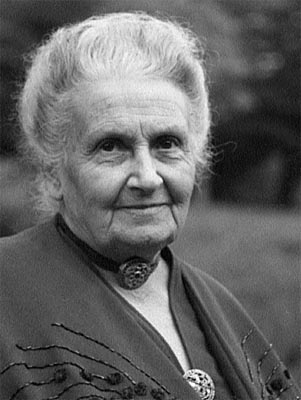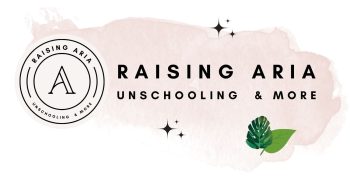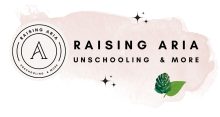Montessori education dates back to 1907, when Maria Montessori opened the Casa dei Bambini, or Children’s House, in a low-income district of Rome. Her unique philosophy sparked the interest of educators worldwide, and in the following decades Montessori schools opened throughout Europe, in North and South America, and, finally, on every continent but Antarctica.
Imagine how a child learns language. There are no formal lessons; instead, the child soaks up language using his senses and begins organically to communicate. This brain mechanism controls early learning.
The fact is, we are born ready to learn. During the first six years of her life, a child absorbs more knowledge than she ever will again. What she learns in this phase makes a deep impression and forms her personality.
My Montessori Journey
My Montessori journey commenced when I was a child. Having attended a Montessori School in the Netherlands, this form of education was a natural choice for raising our daughter.

When my daughter was born, I first read The Montessori Baby by Simone Davies which is a wonderful book that I’d highly recommend to anyone interested in learning about the Montessori Method for babies.

In this book Simone Davies discusses the foundations of the Montessori method, the various activities and developmental stages of babies, how to respectfully and lovingly nurture your baby, and herein also references to The Absorbent Mind by Dr Maria Montessori.
When I finished reading the Montessori Baby, I immediately started to read / listen to the book The Absorbent Mind. In this post I’ll share with you what the absorbent mind is, and how we can use and apply this knowledge in our approach to raising children.
What is Montessori?
Before we get started with the Absorbent Mind, I’d like to give you a short background on what Montessori is and who the founder is. As you might have read on some of my other posts such as Our Montessori Inspired Floor Bed Setup for 6 Month Old Baby and Our Montessori Inspired Movement Area and Playroom Setup For 6 Month Old Baby I mentioned that the Montessori Method really aligns with our vision and values for raising an independent critical thinker. Here’s why:
Montessori is a method of education that is based on self-directed activity, hands-on learning and collaborative play. In Montessori education, children make creative choices in their learning, while the classroom and the highly trained teacher offer age-appropriate activities to guide the process.
To us, Montessori is a way of life, a way of approaching everything we do. For example since our little one was newborn, we have followed many of the suggestions set out by Simone Davies’ book The Montessori Baby. We let our baby find the nipple by herself so that she can do it herself. Babies are very clever and naturally know what to do. We also narrate most of our actions when handling our baby, so that she knows what’s happening when. This gives a sense of inclusion and respect. Still to this day I will say “Can I pick you up now” or “We’re going to change your nappy” and “I’m laying you down on the change table now”.
Who Is The Founder of Montessori?

The founder of the Montessori Education Method is Dr Maria Montessori (1870–1952). Maria Montessori was born in 1870 in Italy and wanted to study Medicine. After initially being refused this male dominant field, Maria was given entry to the University of Rome in 1890 becoming one of the first women in medical school in Italy. Despite facing many obstacles due to her gender, Maria qualified as a doctor in July 1896.1.
You might wonder of Maria went from being successful at treating patients and being known for showing respect to patients from all walks of life, to becoming a founder of an education method. Well, in 1898 Maria gave birth to Mario and soon after that, in 1901 Maria began her own studies of educational philosophy and anthropology, lecturing and teaching students.
After that Maria opened the first Casa dei Bambini (Children’s House) bringing some of the educational materials she had developed at the Orthophrenic School (In 1897, Maria joined a research programme at the psychiatric clinic of the University of Rome, as a volunteer.). Dr. Montessori was determined to make the Casa a quality educational environment for these youngsters, whom many had thought were unable to learn—and she did.
To get a deeper understanding of Maria Montessori’s history and how the Montessori Method came about, you can read this article by the State University on Maria Montessori’s Biography (18 minute read) or read the Montessori Biography by Hills Montessori.
What Is The Absorbent Mind?

The absorbent mind is one of the most important concepts in early childhood education.
The absorbent mind in Montessori refers to a child’s sponge like capacity to absorb information. Unlike a sponge, young children can keep absorbing information without getting saturated.
Maria Montessori found that young children have the ability to take in information through their experiences and environment.
Maria Montessori opened the doors of her learning center on January 6, 1907, calling it the Casa dei Bambini—Italian for “Children’s House”, where she would be working with some of the area’s most disadvantaged, and previously unschooled, children.




While the children were unruly at first, they soon showed great interest in working with puzzles, learning to prepare meals and clean their environment, and engaging in hands-on learning experiences. Dr. Montessori observed that before long, the children exhibited calm, peaceful behaviour, periods of deep concentration, and a sense of order in caring for their environment. She saw that the children absorbed knowledge from their surroundings, essentially teaching themselves. 2
This absorbency begins from the moment of birth, to about the age of 6 years. This stage from 0 to 6 years is also referred to as the first plane of development (to learn more about planes of development you can read this article What are the 4 Planes of Development in Montessori).
Sensitive Periods
A child experiences unique phases throughout the first plane of development. These stages occur in a predictable order, and they are called sensitive periods.
When the child enters into a sensitive period, he becomes fascinated and hyper-focused on certain tasks. For example, around age one, he becomes very interested in small objects. Around age two, he cares very much that everything is in its place and that events occur in a predictable order. There are sensitive periods for learning to walk, toilet training, and learning to read. It is most effective to follow the child’s natural progression for the Absorbent Mind. This allows him the freedom to construct his own learning and to absorb knowledge quickly while enjoying himself greatly. 3
How Young Children Learn
Every little child learns to speak his mother tongue. And no one teaches him the vocabulary, the grammar, or the syntax. It happens every day in every country at just about the same time. It’s a rather amazing feat! If you have tried to learn a foreign language later in your life, you know it is not so easy. Yet every little child does it effortlessly. How? Through the absorbent mind. If the child is in an environment where she hears the language, she will speak it. As the child absorbs words and their meaning along with the context and the emotions behind the words, she begins to construct the ability to communicate.
Children absorb not only their language, but the traits of their families and communities. They learn how and what we eat, and how to behave in certain situations. Some of it is consciously taught, but a great deal of it is simply absorbed through this powerful child mind. Children absorb through a process Montessori called “mental chemistry,” and actually build themselves and their identity through what they absorb. 4
How I apply the absorbent mind concept
Through the power of the absorbent mind, we can give our children a broad and deep foundation, when it is completely effortless for them to learn.
Through the amazing “mental chemistry” of the absorbent mind, the child build his or her identity with wide interests. The child learns through self-chosen, engaging activity and builds a solid base habit of thoughtful concentration and structured learning.




Keeping this in mind, we are mindful of our everyday actions, movements and things we do and ensure our little one is included and exposed to these things. Ranging from simple shopping experiences at the grocery store, to counting money and paying for our items (also read Unschooling and Natural Learning Activities I’m doing with My 8 Month Old).
We ensure we include our little one as much as possible in our everyday things such as getting dressed, going to the bathroom, working out, practicing yoga, using utensils for eating, drinking out of a cup, cooking dinner and so forth.
At home we have a prepared environment setup for our little one, with age appropriate activities. Also see Our Montessori Inspired Movement Area and Playroom Setup For 6 Month Old Baby
As you can see by the photos above, we love nature and make it an important part of our life. Taking our little one to explore trees, scenery and different environments isn’t only calming for her, but also a great way to recharge for tired parents.
The Prepared Environment
A prepared environment is one where a community of children learns social and academic skills while developing into independent beings. Maria Montessori realised the unique way in which children learn and understood the notion of a child’s absorbent mind. “Realizing the absorbent nature of the child’s mind, she has prepared for him a special environment; and then, placing the child within it, has given him freedom to live in it, absorbing what he finds there” (Standing, 1998, p. 265).
There are Six Principles of the Prepared Environment:
- Freedom.
- Structure and Order.
- Beauty.
- Nature and Reality.
- Social Environment.
- Intellectual Environment.
In layman’s terms, it is that we have setup the movement area in our home in a way that is bright, beautiful, inviting, safe, age appropriate and stimulating for our little one, with freedom to move around without obstacles that may limit these principles.
How the classroom applies the absorbent mind concept
Although learning is constructed by the learner for the Absorbent Mind, the teacher has a vital role. Her task is to prepare and arrange the environment so that the children can access the tools they need to learn. This is known as the prepared environment (explained above). 5
References
- https://montessori.org.au/biography-dr-maria-montessori
- https://amshq.org/About-Montessori/History-of-Montessori/
- https://montessorikidsuniverse.com/absorbent-mind-montessori-school/
- https://aimmontessoriteachertraining.org/the-absorbent-mind/
- https://montessorikidsuniverse.com/absorbent-mind-montessori-school/











[…] The founder of the Montessori Education Method is Dr Maria Montessori (1870–1952). Maria Montessori was born in 1870 in Italy and wanted to study Medicine. After initially being refused this male dominant field, Maria was given entry to the University of Rome in 1890 becoming one of the first women in medical school in Italy. Despite facing many obstacles due to her gender, Maria qualified as a doctor in July 1896.1. […]
[…] Also see: The Absorbent Mind by Maria Montessori Explained – What is it and how to apply it […]
[…] The Absorbent Mind […]